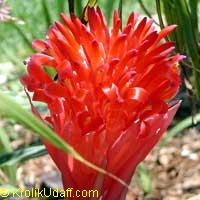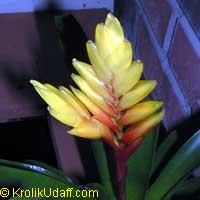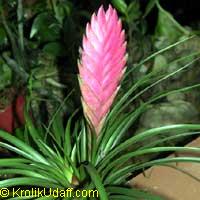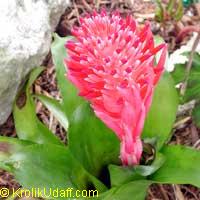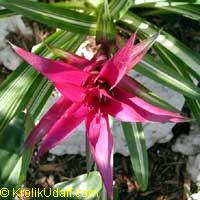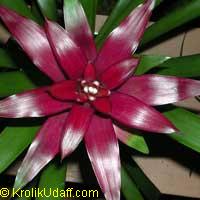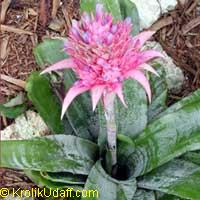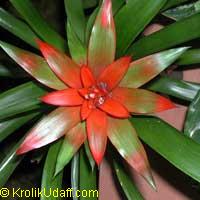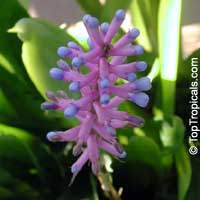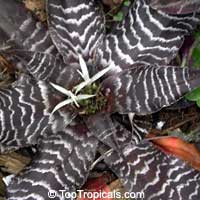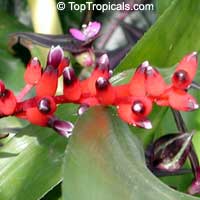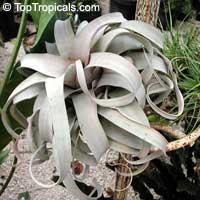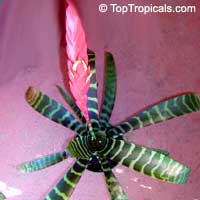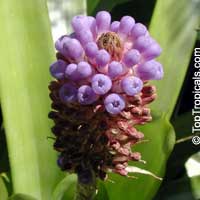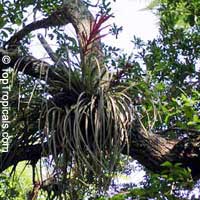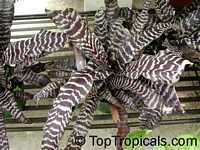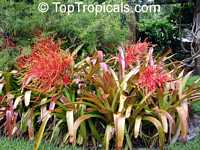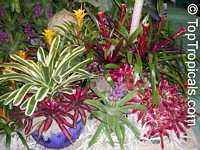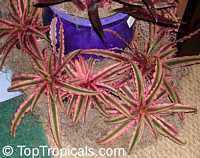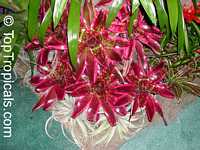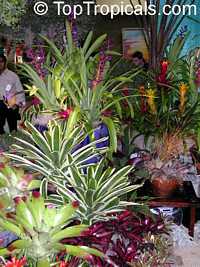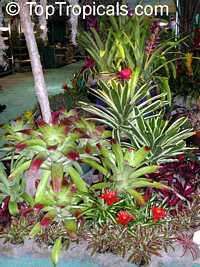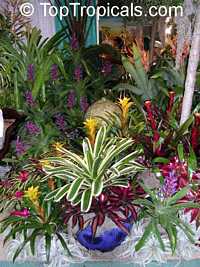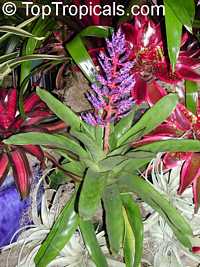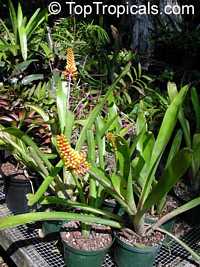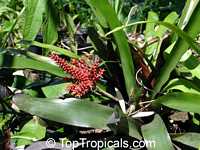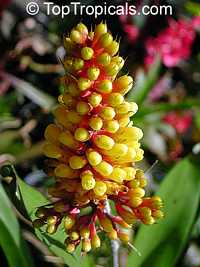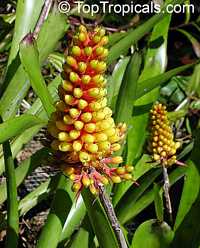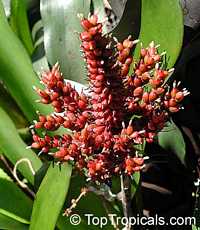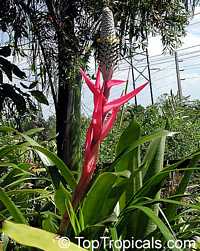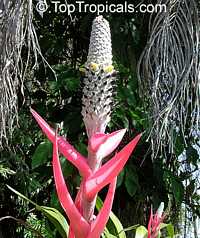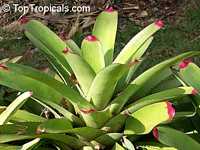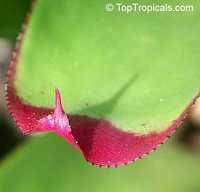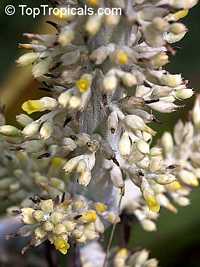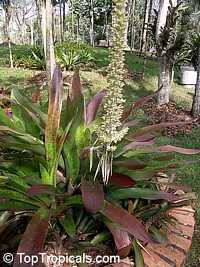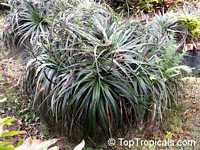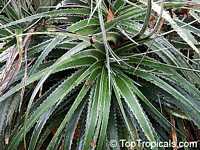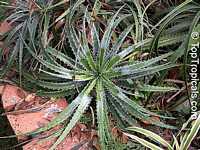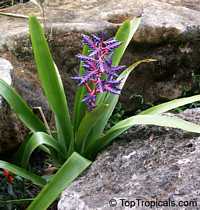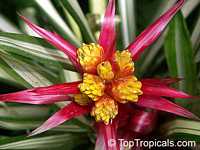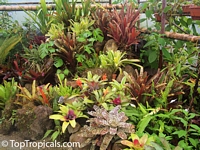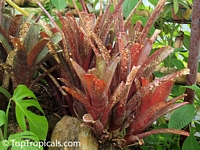Bromeliads
Bromeliads and bromeliad-like plants
At Top Tropicals Picture Gallery you can view a number of quality pictures of tropicals from our collection. However, for this section we have chosen just a few of those hundreds that we have. To see more pictures of particular plants, as well as to see more various species, please visit our Catalog page, where you can find more complete information with pictures and info profiles for each plant.
Click on image to enlarge
Family: Bromeliaceae
The Bromeliads comprise a very large family of some 52 genera and 2,500 recognized
species, a number that is constantly growing through hybridization. All but a
single species, Bromelia pitcairnia, which comes from Senegal, are native to tropical
South America and the Caribbean, are found in locations that range from desert
to rain forest and are both terrestrial and epiphytic in growth. The family name
is derived from Bromelia, one of the largest genera.
Christopher Columbus is supposed to have discovered the first cultivated Bromeliad
when he landed on Guadaloupe on his second voyage to the New World. This proved
to be the famous pineapple, Ananas comosus, which on sampling he found to be "delicious
and freshing to the taste". Samples were brought back to Europe and eventually
spread as a commercial crop to most parts of the tropical world in hybrid forms.
Although pineapples are generally seen in plantations rather than gardens, one
cultivar, A. comosus 'Variegata', has handsome striped leaves with red spines
along the margins and is often used as an ornamental.
Most Bromeliads are epiphytic, growing on trees, fallen branches, and rocks without
soil. One of the largest and most colorful groups is Aechmea, which has broad,
fleshy leaves in a rosette and striking inflorescences that rise from the centre
of the plant. The best-known member of this genus is Aechmea fasciata, often grown
as a potted specimen in green-houses. Other widely cultivated genera are Billbergia,
Bromelia, and Neoregelia, most of which have colored leaves or prominent flower
stalks. The genus Tillsandia is found from the southern United States to northern
Argentina and Chile; the leaves are usually grey and spineless, the inflorescences
often in startlingly brilliant colors. (One unusual Tillsandia is the so-called
Spanish Moss which hangs profusely from so many trees in the American South.)
The majority of Bromeliads are propagated by offshoots that develop from the base
of the parent plant after flowering.
In Hawaii, Florida, and many parts of Central and South America, Bromeliads are
used effectively in gardens, either grown on trees or rocks or in massed plantings.
They are less common in Southeast Asian gardens, especially those at lower altitudes,
though they are often seen as potted specimens. They are also popular as house
plants in temperate countries.
BROMELIADS - CULTURAL DIRECTIONS
Find a well-lit location but not in direct sun. Most bromeliads perform satisfactorily
if given 2,000 foot-candles of light for 12 hours per day. However, they will
do better with 3,000 - 4,000 foot-candles (high humidity is necessary at this
higher light level). For top performance night temperatures between 50 - 65 F
and day temperatures between 70 - 90 F. A day / night differential of at least
10F is also desirable. Relative humidity should ideally be 50% to 75%. Rainwater
or de-ionized water is best for bromeliads, ideally acidic water with a pH 6.5.
Any mix is acceptable as long as it is acidic and holds moisture yet drains quickly.
Pot size is important. Stand above bromeliad, if you can see pot extending beyond
plant, pot is too big. Overpotted plants tend to stay too wet.
